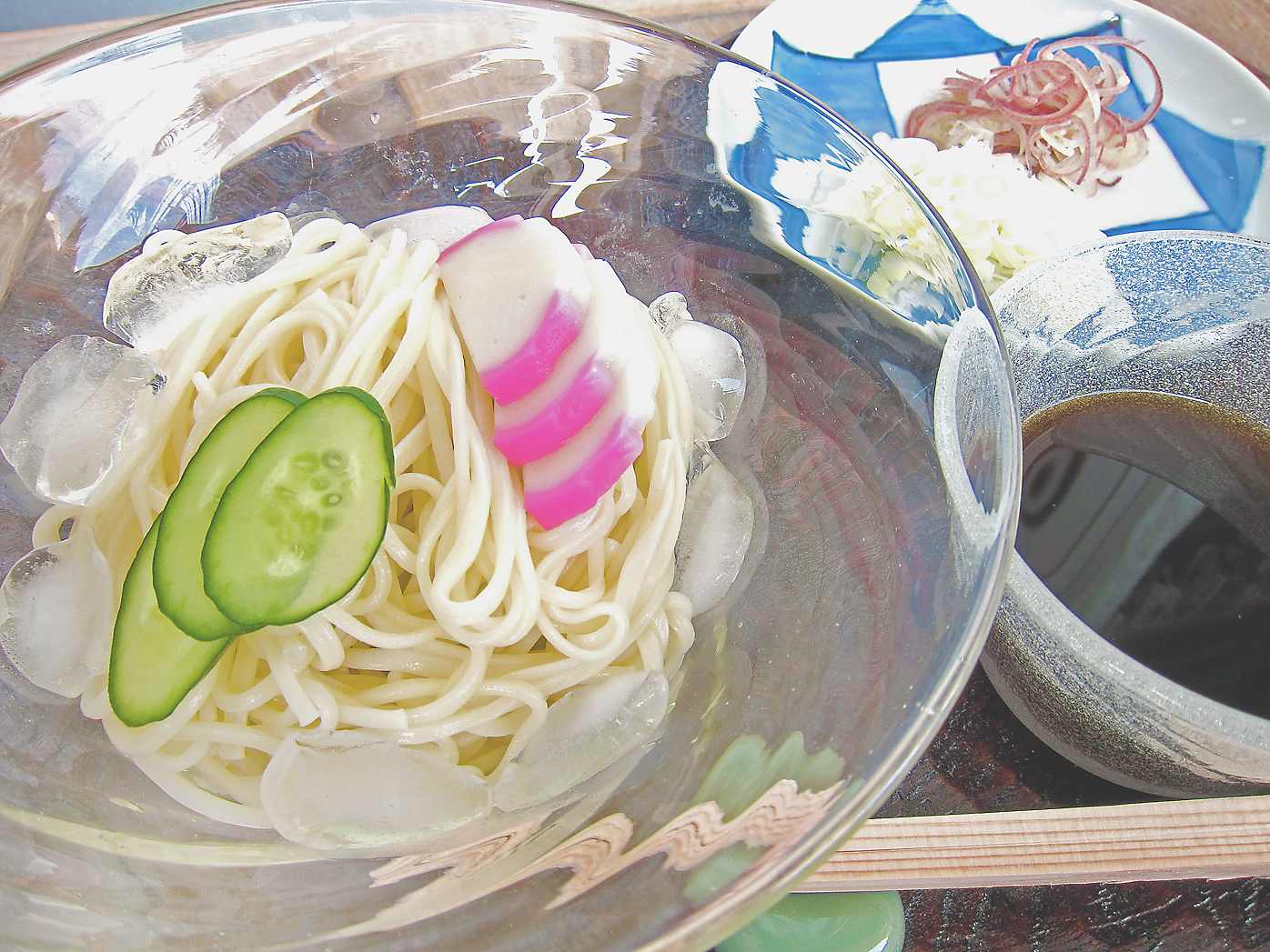Soba, udon and ramen noodles are all well-known outside of Japan, but sōmen — the thin, white wheat noodles that are similar to Italian angel hair pasta — is not as famous. Yet these delicate noodles are very versatile, since they can be served either hot or cold, and since they're so thin, they cook in no time. Cold sōmen with a chilled mentsuyu (noodle dipping sauce) is especially welcome on sweltering summer days, since they go down so easily — even if you have no appetite.
The first references of thin noodles to appear in documents date from the Nara Period (710-794) and indicate the noodles originated in China. Called sōmochi, they were made of rice flour and were twisted like rope, and eaten at the Imperial Court on special occasions throughout the Nara and Heian (794-1185) periods. Thin noodles made with wheat instead of rice flour started being made during the Kamakura Period (1185-1333), and there are accounts of very thin wheat noodles being served regularly as a light meal (known as tenshin) at Buddhist temples during the Muromachi Period (1392-1573). Sōmen noodles gradually spread to the general populace, mainly in areas where wheat was grown, such as western and southern Japan. By the 18th century, during the middle of the Edo Period (1603-1868), sōmen reached Edo (now present-day Tokyo), though it was the region around present-day Hyogo Prefecture that was especially renowned for producing top-quality thin noodles.
Noodle-makers were judged by how thin, smooth and white their sōmen was. To achieve a fine, silky smoothness it is common practice — since the early days — to coat the strands with a little oil. (Most commercially produced sōmen is still made this way, although there are oil-free versions, too.) Sōmen used to be served in long strands rather than the short, cut version that is eaten today.


















With your current subscription plan you can comment on stories. However, before writing your first comment, please create a display name in the Profile section of your subscriber account page.